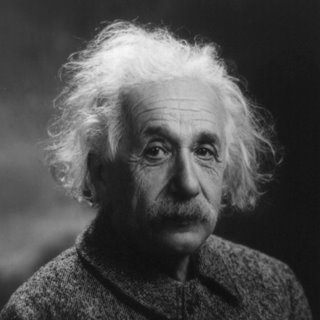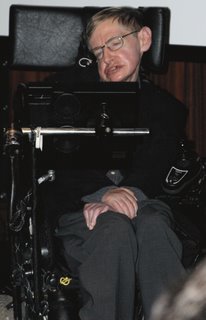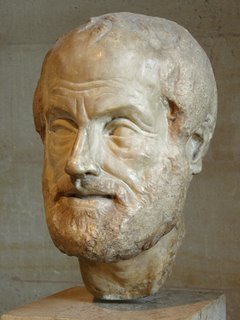During that historic period known as the Renaissance, after the "dark" Middle Ages, there occurred the inventions of printing, gunpowder and the mariner's compass, followed by the discovery of America. Equally remarkable was the invention of the light microscope: an instrument that enables the human eye, by means of a lens or combinations of lenses, to observe enlarged images of tiny objects. It made visible the fascinating details of worlds within worlds.
Invention of Glass Lenses
Long before, in the hazy unrecorded past, someone picked up a piece of transparent crystal thicker in the middle than at the edges, looked through it, and discovered that it made things look larger. Someone also found that such a crystal would focus the sun's rays and set fire to a piece of parchment or cloth. Magnifiers and "burning glasses" or "magnifying glasses" are mentioned in the writings of Seneca and Pliny the Elder, Roman philosophers during the first century A. D., but apparently they were not used much until the invention of spectacles, toward the end of the 13th century. They were named lenses because they are shaped like the seeds of a lentil.
The earliest simple microscope was merely a tube with a plate for the object at one end and, at the other, a lens which gave a magnification less than ten diameters -- ten times the actual size. These excited general wonder when used to view fleas or tiny creeping things and so were dubbed "flea glasses."
Birth of the Light Microscope
About 1590, two Dutch spectacle makers, Zaccharias Janssen and his son Hans, while experimenting with several lenses in a tube, discovered that nearby objects appeared greatly enlarged. That was the forerunner of the compound microscope and of the telescope. In 1609, Galileo, father of modern physics and astronomy, heard of these early experiments, worked out the principles of lenses, and made a much better instrument with a focusing device.
Anton van Leeuwenhoek (1632-1723)
The father of microscopy, Anton van Leeuwenhoek of Holland, started as an apprentice in a dry goods store where magnifying glasses were used to count the threads in cloth. He taught himself new methods for grinding and polishing tiny lenses of great curvature which gave magnifications up to 270 diameters, the finest known at that time. These led to the building of his microscopes and the biological discoveries for which he is famous. He was the first to see and describe bacteria, yeast plants, the teeming life in a drop of water, and the circulation of blood corpuscles in capillaries. During a long life he used his lenses to make pioneer studies on an extraordinary variety of things, both living and non living, and reported his findings in over a hundred letters to the Royal Society of England and the French Academy.
Robert Hooke
Robert Hooke, the English father of microscopy, re-confirmed Anton van Leeuwenhoek's discoveries of the existence of tiny living organisms in a drop of water. Hooke made a copy of Leeuwenhoek's light microscope and then improved upon his design.
Charles A. Spencer
Later, few major improvements were made until the middle of the 19th century. Then several European countries began to manufacture fine optical equipment but none finer than the marvelous instruments built by the American, Charles A. Spencer, and the industry he founded. Present day instruments, changed but little, give magnifications up to 1250 diameters with ordinary light and up to 5000 with blue light.
Beyond the Light Microscope
A light microscope, even one with perfect lenses and perfect illumination, simply cannot be used to distinguish objects that are smaller than half the wavelength of light. White light has an average wavelength of 0.55 micrometers, half of which is 0.275 micrometers. (One micrometer is a thousandth of a millimeter, and there are about 25,000 micrometers to an inch. Micrometers are also called microns.) Any two lines that are closer together than 0.275 micrometers will be seen as a single line, and any object with a diameter smaller than 0.275 micrometers will be invisible or, at best, show up as a blur. To see tiny particles under a microscope, scientists must bypass light altogether and use a different sort of "illumination," one with a shorter wavelength.
The introduction of the electron microscope in the 1930's filled the bill. Co-invented by Germans, Max Knoll and Ernst Ruska in 1931, Ernst Ruska was awarded half of the Nobel Prize for Physics in 1986 for his invention. (The other half of the Nobel Prize was divided between Heinrich Rohrer and Gerd Binnig for the STM.)
In this kind of microscope, electrons are speeded up in a vacuum until their wavelength is extremely short, only one hundred-thousandth that of white light. Beams of these fast-moving electrons are focused on a cell sample and are absorbed or scattered by the cell's parts so as to form an image on an electron-sensitive photographic plate.
Power of the Electron Microscope
If pushed to the limit, electron microscopes can make it possible to view objects as small as the diameter of an atom. Most electron microscopes used to study biological material can "see" down to about 10 angstroms--an incredible feat, for although this does not make atoms visible, it does allow researchers to distinguish individual molecules of biological importance. In effect, it can magnify objects up to 1 million times. Nevertheless, all electron microscopes suffer from a serious drawback. Since no living specimen can survive under their high vacuum, they cannot show the ever-changing movements that characterize a living cell.
Light Microscope Vs Electron Microscope
Using an instrument the size of his palm, Anton van Leeuwenhoek was able to study the movements of one-celled organisms. Modern descendants of van Leeuwenhoek's light microscope can be over 6 feet tall, but they continue to be indispensable to cell biologists because, unlike electron microscopes, light microscopes enable the user to see living cells in action. The primary challenge for light microscopists since van Leeuwenhoek's time has been to enhance the contrast between pale cells and their paler surroundings so that cell structures and movement can be seen more easily. To do this they have devised ingenious strategies involving video cameras, polarized light, digitizing computers, and other techniques that are yielding vast improvements in contrast, fueling a renaissance in light microscopy.





